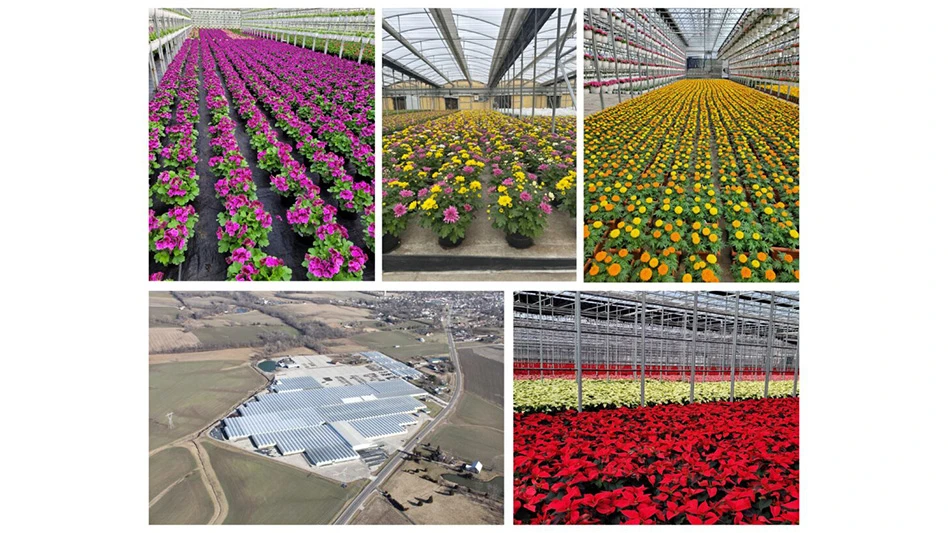 Did you see the Yahoo! story that called horticulture and agriculture degrees “useless?” Yeah, we got riled about it, too. But Jennifer Ryder Fox, dean of the College of Agriculture at California State University, Chico, presented an excellent rebuttal. Below is an excerpt. See both on the Nursery Management website.
Did you see the Yahoo! story that called horticulture and agriculture degrees “useless?” Yeah, we got riled about it, too. But Jennifer Ryder Fox, dean of the College of Agriculture at California State University, Chico, presented an excellent rebuttal. Below is an excerpt. See both on the Nursery Management website.
“In contrast to the Yahoo article, a Purdue University study funded by the USDA projected an estimated 54,400 annual openings for college graduates in food, renewable energy, and the environment between 2010 and 2015. The study projected only 53,500 qualified graduates will be available each year ...
The California Community College Centers for Excellence recently completed an environmental scan of the agriculture value chain in California and found that there are currently 2.5 million individuals employed in more than 800 job titles within the agriculture value chain in the state. The average annual salary for agricultural value chain workers is $50,000. While the number of production jobs is expected to decrease in the next five years, a net increase of 181,000 jobs is expected throughout the entire agricultural value chain, which includes support, research, technology, production, processing/packaging, marketing, and sales and distribution.
.jpg)
Here at CSU, Chico, the optimism for agricultural careers can be seen in the 50 percent enrollment growth in programs offered through the College of Agriculture during the past five years.
Clearly, our students and those in other ag programs are seeing the tremendous career opportunities available in agriculture and are jumping at the opportunity to pursue them, Mr. Loose’s puzzling attack on their choice of major notwithstanding.”
Who We've Met
 I had the pleasure of meeting Roderick Woods, breeder of Pink Chiffon rose of Sharon, at Mid-Am in Chicago in January. Like most breeders, he’s got an insatiable love plants and his is for Hibiscus syriacus. Pink Chiffon is available through Proven Winners ColorChoice. It’s a beauty. Woods’ background is really fascinating. According to Protected Varieties Ltd., he taught physiology and histology for more than 30 years, then became an accident and injury researcher. During a trip to France in the 1980s, he spotted a glowing pink form of hibiscus and became enamored with it. When he returned to England, he realized such a form didn’t exist in the market. He later returned to the same spot in France, but discovered the road had been widened and the plant no longer existed. That set his breeding work into motion.
I had the pleasure of meeting Roderick Woods, breeder of Pink Chiffon rose of Sharon, at Mid-Am in Chicago in January. Like most breeders, he’s got an insatiable love plants and his is for Hibiscus syriacus. Pink Chiffon is available through Proven Winners ColorChoice. It’s a beauty. Woods’ background is really fascinating. According to Protected Varieties Ltd., he taught physiology and histology for more than 30 years, then became an accident and injury researcher. During a trip to France in the 1980s, he spotted a glowing pink form of hibiscus and became enamored with it. When he returned to England, he realized such a form didn’t exist in the market. He later returned to the same spot in France, but discovered the road had been widened and the plant no longer existed. That set his breeding work into motion.

Explore the February 2012 Issue
Check out more from this issue and find your next story to read.
Latest from Nursery Management
- GIE Media Horticulture Group wins five regional 2025 Azbee Awards of Excellence
- Get to know Pat Reilly with NewGen Boxwood and the American Boxwood Society
- Terra Nova Nurseries introduces rust-free and disease-resistant heucherella
- John T. Nickel, founder of Greenleaf Nursery Co., passes away at 89
- Three tours offered at 2025 Farwest Show
- Garden Media Group announces sixth annual Women in Horticulture Week
- Star Roses and Plants announces National Knock Out Rose Day
- The Growth Industry Episode 4: How federal budget cuts are affecting horticulture nonprofits





